What is one message that we’ve heard time and time again from our government, health care professionals, school teachers and the media? “Eat well and exercise to be healthy”. Here on the blog, we’ve taken a lot of time to discuss misconceptions about healthy eating, as well as the influence diet culture has on our relationship with food and with our bodies.
What we haven’t talked about as much is exercise. Just as the idea of “eating well” or “eating clean” can be taken to the extreme and become damaging to your child’s health, overexercising can be equally destructive. Even though gentle nutrition and engaging in movement can both be good for your child’s health, there is such a thing as too much of a good thing!
Watch the Video Here!
What is Overexercising?
Excessive or compulsive exercise is often related to eating disorders, though this may not always be the case. Some people may overexercise to try to compensate for food they have eaten, change their appearance, or meet certain athletic goals. Compulsive or excessive exercise is defined as valuing exercise as a top priority in life, so that exercise interferes with work, school, social functions, sleep, and personal health. It often involves sticking to a very regimented exercise routine, even during injury or sickness.
Anything that threatens to disrupt this workout schedule may bring feelings of anxiety or anger in your child. If your child struggles with overexercising, during exercise your child may also experience increased anxiety due to feeling continuous pressure to make their workouts more and more difficult.
Overexercising can cause a lot of damage in many areas of your child’s life. Physically, it can cause stress fractures, dangerously low heart rates, reproductive dysfunction, and osteoporosis. Psychologically, it can contribute to insomnia, anxiety, and depression. Socially, excessive exercise can lead to social isolation and can impact your child’s relationships with family and friends. If overexercising is something your child is struggling with, we want to help you support your child by helping them to rethink their fitness regimen and replace it with more sustainable (and enjoyable!) habits.
Overexercising Symptoms
- Feeling guilt or shame when missing a workout
- Exercising when injured or sick
- Frequently missing out on social activities or family time because they feel they have to work out
- Calculating how much they have to workout based on what foods they ate
- Eating less in a day because they are not able to workout
How Can I Help My Child Stop Overexercising?
One of the first things that we recommend for your child is that they take a break from their exercise routine. By stepping back for a period of time, your child may be better able to reflect on their activity habits and how they may be causing issues in their life. Stopping overexercising, however, is easier said than done. Exercise may have become an addiction that is almost involuntary, especially when someone is struggling with an eating disorder. In this case, some drastic measures may need to be taken to put a stop to excessive exercise.
First and foremost, it is critical for anyone with an eating disorder to seek help from a team of health care professionals because an eating disorder is a serious mental illness that requires treatment. In addition to professional help, there are resources to aid you in your personal struggle with overexercising. Kelty Mental Health has put together a great resource for parents with children battling an eating disorder, and one section offers tips for helping children to stop overexercising. We’ve paraphrased these tips for you here:
- If your child tends to exercise in their room, it may be necessary to take your child’s bedroom door off its hinge or always keep their door open, so you can regularly monitor your child and ensure they are not exercising. You may also need to rearrange their bedroom furniture so there is less floor space for exercise.
- If your child feels that they need to exercise, encourage them to try to do a less intense version of the movement. If they wanted to go for a jog, encourage them to go for a walk instead. Also, when your child does engage in physical activity, don’t let them do it alone. Encourage them to go with a trusted friend or offer to go with them.
- Remove all exercise equipment from your home (i.e. bikes, rollerblades, weights, etc.).
- If your child is in school and has a mandatory gym class, talk to their school about having them exempt from the class until further notice.
Counselling is another valuable time investment – by receiving counselling from a trained professional, your child will be able to learn healthier ways of coping. These coping mechanisms can then be employed instead of exercise when your child faces difficult emotions and life circumstances. A counsellor or therapist can also help to identify unhelpful thought patterns and then reframe beliefs and perceptions of exercise.

How to Reintroduce Safe Exercise
Once your child has taken a considerable break from physical activity, allowing themselves time to rest and reset, your child may feel ready to begin being active again. It is useful for them to begin being active with the mindset that movement is meant to nurture their body. They should try to remember that movement should be enjoyable, sustainable and energizing. It is usually helpful to avoid “cardio” activities at first, because cardio is the type of activity that is most often abused by those who overexercise.
So instead of heading to the gym or going for a run, encourage your child to re-introduce themselves to movement more gently. Encourage them to incorporate activities that they enjoy in their everyday life. For example, your child could take an evening walk around your neighbourhood, play volleyball next time they go to the beach, practice yoga in the morning or enjoy a weekend hiking trip.
And when they do participate in movement, make sure they always invite someone to join them. That person could be a friend, a family member, their therapist or really anyone they know and trust that has a healthy relationship with movement and can help keep your child accountable to not over-exerting. Your child may find that having a companion during physical activity makes movement more enjoyable, and also provides an opportunity for them to talk about and process the feelings they experience as they move their body.
Exercise can become a destructive practice when it begins to dominate our child’s life, but we must remember that our child is never “in too deep.” They can find freedom from excessive exercise by taking a break, getting help to reframe their thinking, practicing healthier coping mechanisms and engaging in positive movement. If you believe your child may be overexercising and/or showing signs of an eating disorder and are unsure where to turn, you can book a free, 15-minute consultation call with us.
*Reserved for Canadian residents.

